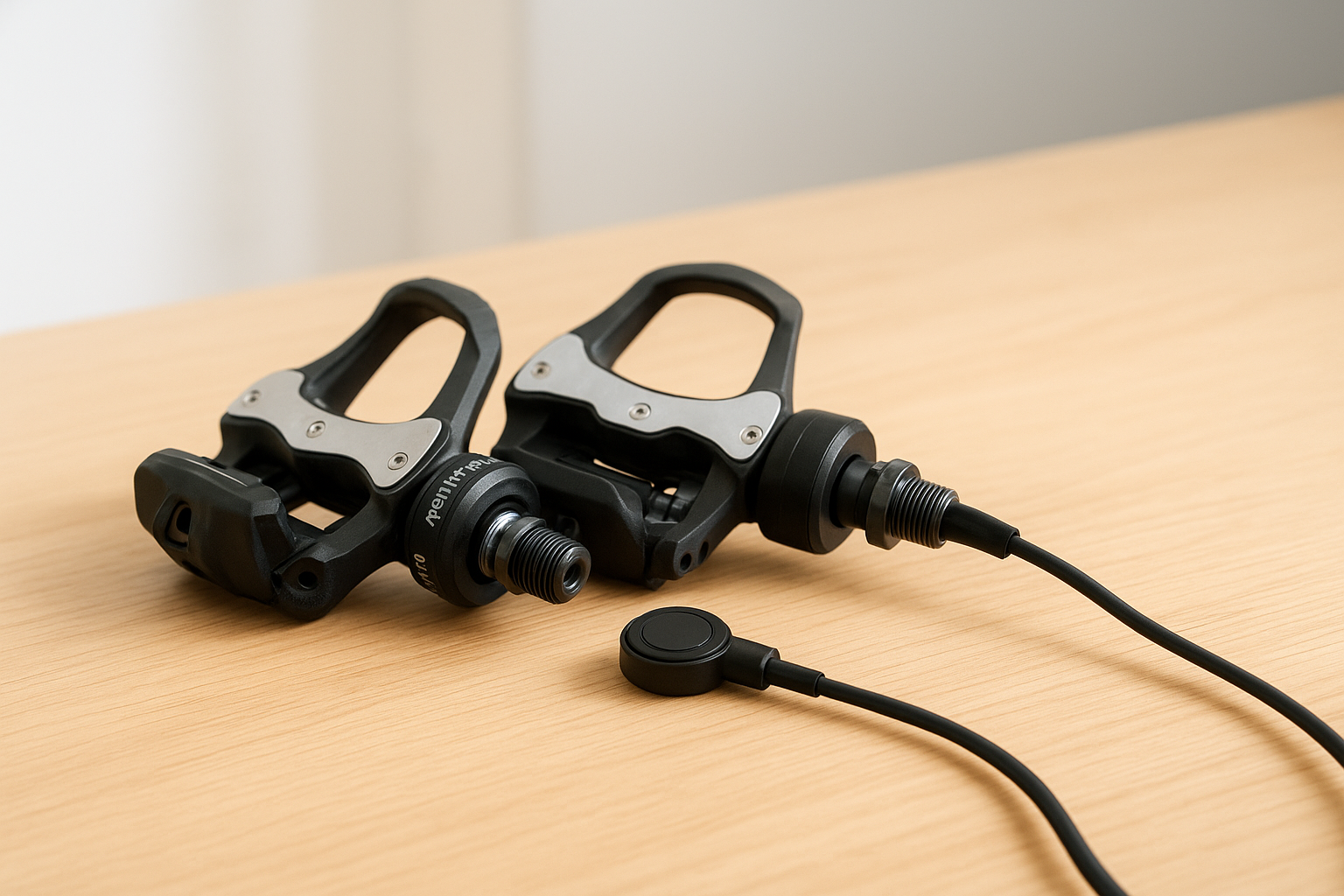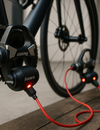
If you own a pair of Favero Assioma power meter pedals, you already know they’re among the most accurate, durable, and user-friendly cycling power meters on the market. But like any electronic device, your Assioma pedals need proper care—especially when it comes to charging and battery maintenance.
In this comprehensive guide, we’ll walk through the best charging practices, how to extend your Assioma’s battery lifespan, and the common mistakes to avoid. Whether you’re using the Assioma UNO or DUO, these tips will help keep your pedals in top condition for years to come.
Understanding the Favero Assioma Battery System
Before diving into the do’s and don’ts, it helps to understand what powers your Assioma pedals.
Each pedal contains a rechargeable lithium-ion battery, designed to deliver up to 50 hours of ride time on a full charge. Favero’s engineers designed these batteries for long-term reliability, estimating around 500 full charge cycles before you’ll notice any significant capacity drop.
The system also uses magnetic charging connectors, which make it easy to plug and unplug without risk of water ingress or port wear—a thoughtful design for cyclists who ride in all conditions.
That said, even high-quality lithium batteries degrade over time. How quickly they degrade depends heavily on how you charge, store, and maintain them.
Charge Smart: Timing and Frequency Matter
One of the most common questions cyclists have is:
“How often should I charge my Favero Assioma pedals?”
Here’s the simple answer:
Charge when you need to—not constantly.
Lithium batteries don’t like to be kept at 100% or 0% for extended periods. The sweet spot lies between 20% and 80% charge. This range helps prevent unnecessary stress on the cells, which in turn extends overall battery health.
Practical Charging Frequency Tips
-
After every few rides: If you ride 2–3 times per week, charge your pedals once weekly.
-
Before a big event or long ride: Top them up to full (100%) the night before for peace of mind.
-
If you won’t ride for a while: Store the pedals at about 50–60% charge rather than leaving them full or empty.
Quick Charging Insight
Favero’s magnetic USB charging cable allows you to charge both pedals simultaneously through a dual splitter. From 0% to full typically takes about 6 hours. You don’t need to wait until the battery is completely drained—charging partial cycles is perfectly fine (and even better for longevity).
Avoid Overcharging — and Overnight Charging
Modern lithium-ion batteries have built-in protection circuits to prevent overcharging, but that doesn’t mean you should leave them plugged in indefinitely.
Leaving your Assioma pedals charging overnight occasionally won’t destroy them—but doing it habitually can shorten their lifespan over time.
Here’s why:
-
Once the battery reaches full capacity, it enters a “trickle charge” state.
-
This maintains 100% charge by topping it up repeatedly as voltage drops slightly.
-
That constant high-voltage state causes mild, cumulative wear on the lithium cells.
Pro Tip:
Once the LED indicators turn solid green, unplug the charger. This helps reduce heat buildup and voltage stress—two major contributors to long-term degradation.
If you ride daily and prefer topping off your pedals each night, it’s fine to charge them partially (say, from 50% to 80%) rather than to full capacity.
Mind the Temperature: The Hidden Factor Affecting Battery Life
Temperature is one of the biggest silent killers of lithium-ion batteries.
Favero Assioma pedals are designed to operate across a wide temperature range—from -10°C to +60°C (14°F to 140°F)—but that doesn’t mean those extremes are good for battery health.
Charging Temperature Guidelines
-
Ideal charging temperature: Between 10°C and 30°C (50°F–86°F).
-
Avoid charging your pedals immediately after a ride if they feel hot from use or sunlight.
-
Similarly, don’t charge them in freezing conditions (like a cold garage in winter).
Allow the pedals to reach room temperature before plugging them in. Charging at extreme temperatures can cause lithium plating, which reduces battery capacity over time.
Proper Storage Practices for Long Breaks
Not riding for a while—like during the off-season or winter months? How you store your Assioma pedals matters more than you might think.
Here’s how to store them safely:
Charge to 50–60% before storage: Lithium batteries naturally self-discharge over time. Storing them full can accelerate capacity loss, while storing them empty risks deep discharge (which can permanently damage the cells).
Store in a cool, dry place: Room temperature is perfect. Avoid areas prone to humidity, heat, or freezing conditions—like attics, sheds, or garages.
Disconnect the charger: Never leave the pedals plugged into the charger for long-term storage. Once charged, disconnect the magnetic cable completely.
Wake them up every few months: If you’re not riding for more than three months, give the pedals a quick top-up charge to 50% to maintain healthy cell voltage.
Cleaning and Charging Safety
A key part of Assioma’s appeal is its water-resistant magnetic charging port—but “water-resistant” doesn’t mean “charge when wet.”
Best Cleaning & Charging Habits
-
Always dry the pedals before attaching the charger.
-
Avoid harsh detergents or high-pressure washing near the pedal body.
-
If you’ve ridden in heavy rain, let the pedals air-dry before charging.
-
Keep the charging connectors clean and free of debris—wipe gently with a dry cloth.
This ensures the magnetic contacts remain corrosion-free and that charging remains efficient and safe.
Don’t Let Your Pedals Sit Completely Drained
Leaving your Assioma pedals at 0% charge for extended periods is one of the fastest ways to kill a lithium battery.
When the battery voltage drops too low, the internal protection circuit prevents charging for safety reasons—sometimes permanently disabling the cell.
If you notice your pedals no longer respond to charging, it might be due to deep discharge. Avoid this by charging them once every month or two, even if you’re not riding regularly.
Pro Tip:
If your Assioma pedals haven’t been used for several months, and they don’t power on after charging, try leaving them connected for an hour. Sometimes the internal voltage needs time to recover before the LED lights respond.
Use Only Official or Compatible Chargers
Favero’s supplied charger and cable are designed to deliver the correct current and voltage to the Assioma pedals. Using unofficial third-party cables might seem harmless, but poor-quality ones can lead to:
-
Incorrect voltage delivery
-
Overheating
-
Shortened battery life
If you ever need a replacement, Favero sells official Assioma charging cables and dual USB splitters through authorized resellers. Always verify authenticity to protect your investment.
Signs It’s Time to Check or Replace Your Battery
While the Assioma pedals are engineered for longevity, all batteries eventually wear out. Here are a few signs that your battery might be reaching the end of its life cycle:
-
The pedals don’t hold charge as long (e.g., less than 20 hours instead of 50).
-
Charging takes much longer than usual.
-
The pedals don’t fully charge even after several hours.
-
LED indicators behave abnormally or show inconsistent status.
If you notice these issues, reach out to Favero support or an authorized service center. Do not attempt to open or replace the battery yourself—this can void the warranty and damage the pedals.
Battery Health Myths — Busted
Let’s clear up a few misconceptions that still circulate among cyclists:
Myth 1: You should fully discharge the battery before charging.
Truth: Modern lithium batteries prefer shallow cycles. Frequent top-ups are healthier than full drains.
Myth 2: Charging overnight every time is harmless.
Truth: Occasional overnight charging is fine, but unplugging when full is better for longevity.
Myth 3: Keeping your pedals at 100% charge maintains readiness.
Truth: Long-term high voltage accelerates chemical wear. Store between 40–60% instead.
Myth 4: Cold storage extends battery life.
Truth: Extreme cold can cause condensation and voltage stress. Moderate room temperature is ideal.
Key Takeaways for Long-Term Assioma Battery Health
Let’s wrap up the essentials:
| Best Practice | Why It Matters |
|---|---|
| Charge between 20%–80% | Minimizes wear and stress on the cells |
| Avoid charging when hot or freezing | Prevents lithium plating and voltage stress |
| Store at ~50% for long periods | Prevents deep discharge and capacity loss |
| Keep connectors clean and dry | Ensures efficient, safe charging |
| Unplug once fully charged | Reduces voltage and heat wear |
| Use official Favero chargers | Guarantees safe, correct charging voltage |
Final Thoughts
Your Favero Assioma power meter pedals are more than just a tool—they’re an investment in precision performance. With proper care and smart charging habits, you can keep their batteries healthy and reliable for years of cycling adventures.
By following these practical charging and storage guidelines, you’ll not only extend battery life but also ensure that your Assioma pedals are always ready to record every watt of your effort—ride after ride, season after season.
So next time you plug in your Assiomas, remember:
Charge smart. Store right. Ride strong.




